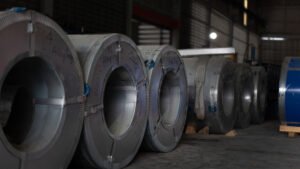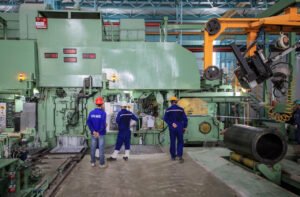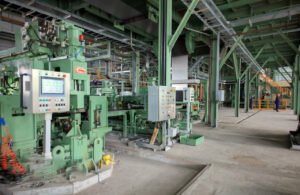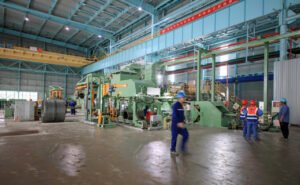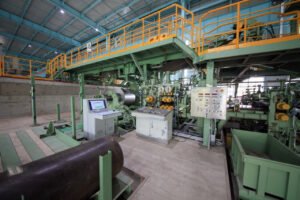Global Stainless Steel Sheet Demand Forecast 2025-2030: Key Drivers & Risks

Are you struggling to anticipate future shifts in the stainless steel sheet market? Making procurement decisions based on uncertain forecasts can erode your margins and disrupt your entire supply chain, leaving you vulnerable while competitors get ahead. This forecast provides the clarity needed for strategic planning.
The global stainless steel sheet market is projected to experience steady growth, expanding at a CAGR of approximately 4-5% CAGR between 2025 and 2030. This demand is primarily fueled by rapid industrialization in emerging economies, the global transition toward renewable energy, and expansive infrastructure development.
Navigating this growth requires more than just acknowledging the numbers. The global landscape is a complex tapestry of opportunities and risks, where a headline figure can mask significant regional and sectoral variations1. To truly capitalize on what lies ahead, we need to look deeper into the forces shaping our industry and prepare for the volatility that inevitably accompanies change.
As the Global Business Director at MFY, I’ve spent years on the front lines, helping clients from India to the Middle East navigate these very challenges. The difference between companies that thrive and those that merely survive often comes down to one thing: foresight. It's not about predicting the future with perfect accuracy, but about understanding the underlying currents—the drivers pushing demand forward and the risks that threaten to pull it back. This analysis isn't just academic; it’s a strategic imperative for building a resilient and profitable business in the years to come.
What are the forecasted trends for global stainless steel sheet demand between 2025 and 2030?
Feeling uncertain about where the stainless steel sheet market is heading? This ambiguity can lead to costly inventory mistakes and missed growth opportunities. Understanding the specific regional and sectoral trends is the first step toward building a proactive and resilient procurement strategy for the coming years.
Between 2025 and 2030, global demand for stainless steel sheets is forecast to grow moderately but consistently. The Asia-Pacific region will remain the dominant driver of this growth, while mature markets in Europe and North America will see a shift toward high-value, specialized applications.
This forecast, while encouraging, represents a global average. The reality for your business will be shaped by the specific dynamics of your market and end-use industry. A blanket approach to strategy simply won't work in a world where a construction boom in Southeast Asia coexists with a push for ultra-specialized medical-grade steel in Europe. In my experience at MFY, I've seen clients who tailor their strategy to these nuances gain a significant competitive edge. They aren't just buying steel; they are investing in the right material, for the right application, at the right time. To do this effectively, we must first break down the global forecast into its constituent parts, examining the powerful currents flowing through key regions and what they signal for stakeholders. This deeper understanding allows us to move from a reactive position—simply responding to market changes—to a proactive one where we anticipate shifts and position our operations to benefit from them. The following analysis will explore these regional trends in detail, providing a clearer map of the landscape ahead.
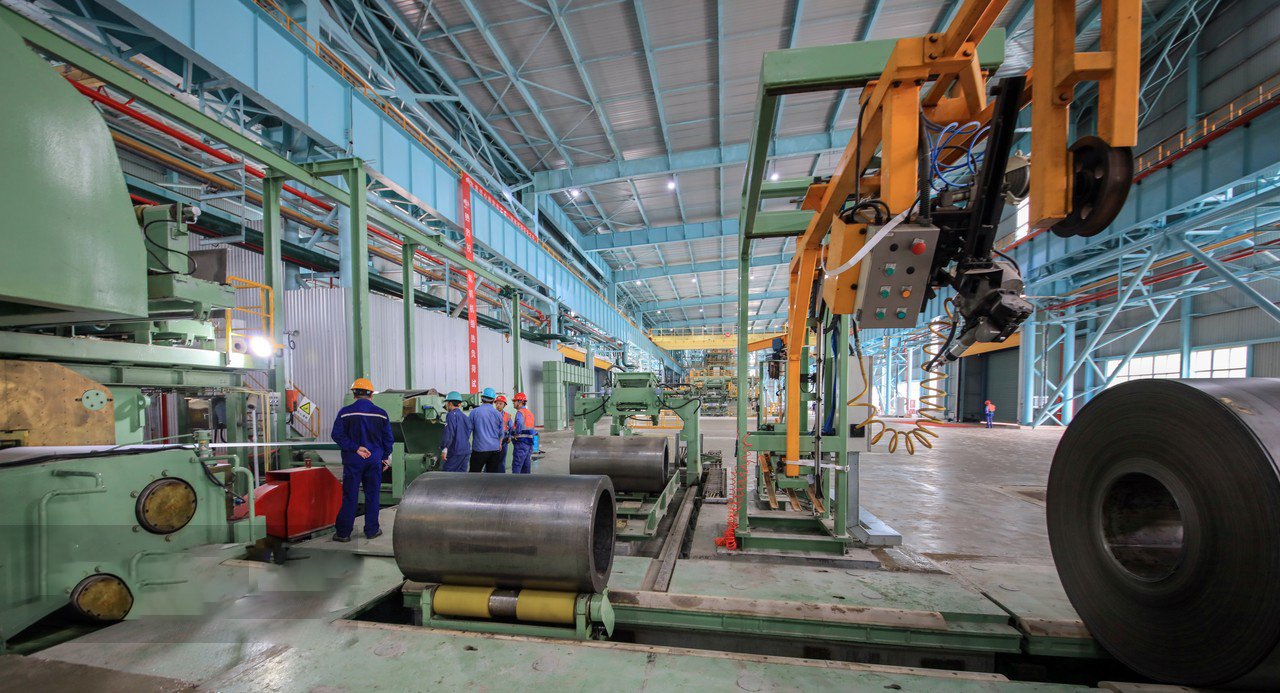
The Continued Dominance of the Asia-Pacific Engine
The narrative of global stainless steel demand for the latter half of this decade will be overwhelmingly written in the Asia-Pacific. This region, already accounting for over two-thirds of global consumption, is not just a market leader; it's the epicenter of growth. Countries like India, Vietnam, and Indonesia are in the midst of profound economic transformation, driven by massive investments in urban infrastructure, manufacturing expansion, and a burgeoning middle class. At MFY, we see this firsthand. A key client of ours, an engineering contractor in India, recently secured a large-scale project for a new metropolitan transit system. Their demand wasn't just for standard-grade sheets but for a consistent supply of high-tensile strength 304L sheets for structural components and polished 430 sheets for interior finishes, all delivered on a tight schedule.
This story is a microcosm of a much larger trend. According to the World Steel Association, emerging and developing economies in Asia are projected to see steel demand increase at a fast pace2 than the global average. This isn't just about building new skyscrapers and bridges. It's about the entire ecosystem that surrounds this development: the construction of new factories, the expansion of food and beverage processing facilities, and the increased production of consumer goods like appliances and automobiles to meet the needs of a more affluent population. This sustained, multi-faceted demand provides a powerful and stable foundation for the global market.
For stakeholders, the implication is clear: a robust Asia strategy is non-negotiable. It requires more than just a sales office; it demands a deep integration into the local supply chains and an understanding of the specific project pipelines driving demand. The challenge lies in navigating the logistical complexities and diverse regulatory environments of the region. However, the opportunity to participate in this generational growth story is immense, making it the most critical region for any business with global ambitions in the stainless steel sector.
Mature Markets: A Strategic Pivot to High-Value Applications
While the high-growth narrative belongs to Asia, the mature markets of Europe and North America are undergoing a different, yet equally important, evolution. Here, the focus is shifting away from sheer volume and toward specialization and value. Decades of industrialization have left these regions with well-developed infrastructure, so the primary driver is no longer new construction but rather maintenance, retrofitting, and the development of advanced industrial applications. Stringent environmental regulations and a strong consumer push for sustainability are accelerating this trend, favoring durable and recyclable materials like stainless steel.
We are witnessing a distinct pivot towards high-performance stainless steel grades3. For example, the European Union’s push for a circular economy and stricter emissions standards is driving demand for corrosion-resistant duplex stainless steel in chemical processing plants and desalination facilities. In North America, the reshoring of critical manufacturing, particularly in the medical and aerospace sectors, is creating new opportunities for high-purity and precision-finished stainless steel sheets. A partner of ours, a distributor in Germany, has successfully shifted their business model to cater to these niches, focusing on providing certified, traceable materials for medical device manufacturers who require absolute product integrity.
This shift presents a different kind of opportunity. It's less about scale and more about capability. Success in these markets requires deep technical expertise, stringent quality control, and the ability to provide value-added services like custom polishing, cutting, and just-in-time delivery. For a company like MFY, our integrated supply chain, from raw materials to cold-rolled processing, allows us to meet these exacting standards. The growth may be more modest in percentage terms, but the higher margins and long-term partnerships available in these value-added segments make them a crucial component of a balanced global strategy.
Emerging Frontiers and New Pockets of Growth
Beyond the established giants, the next decade will see the rise of new frontiers for stainless steel demand, particularly in parts of Latin America, the Middle East, and Africa. While these markets are often characterized by higher volatility and political risk, they also hold significant untapped potential. Investment in energy infrastructure, both traditional and renewable, is a key driver. In the Middle East, for instance, massive economic diversification projects are creating demand for stainless steel in new architectural designs, public transportation, and large-scale water treatment facilities.
One of our clients, an equipment integrator for the food processing industry in Brazil, has seen their demand for food-grade 316L stainless steel sheets surge as the country expands its capacity to export processed foods. Their challenge was not just sourcing the material but navigating complex import logistics and currency fluctuations. By establishing a strong partnership, we were able to provide them with flexible financing terms and a reliable supply schedule, allowing them to bid on larger projects with confidence. This is a recurring theme in emerging markets: the need for a supplier who is not just a vendor but a strategic partner capable of mitigating local risks.
Successfully engaging with these markets requires a higher risk tolerance and a more agile operational model. It necessitates building strong local relationships and having a clear understanding of the on-the-ground economic and political climate. While these regions may not rival Asia in terms of volume in the near term, they represent important pockets of growth and diversification. For global players, establishing an early foothold in these developing supply chains can yield substantial long-term benefits, capturing market share as these economies mature and stabilize.
Asia-Pacific drives stainless steel demandTrue
The Asia-Pacific region accounts for over two-thirds of global stainless steel consumption and is the primary growth engine.
Europe focuses on high-value applicationsTrue
Mature European markets are shifting toward specialized, high-performance stainless steel grades for advanced industrial uses.
Which key drivers will influence the demand for stainless steel sheets globally in the coming years?
Are you finding it difficult to pinpoint the exact forces causing sudden shifts in market demand? Reacting to these changes after the fact erodes profitability and puts you on the back foot. To get ahead, you must clearly identify the fundamental drivers shaping our industry's future.
The primary global drivers for stainless steel sheet demand through 2030 will be the green energy transition, extensive infrastructure development in emerging economies, and the growing consumer appetite for durable goods and modern vehicles, all requiring significant material input.
These drivers are not isolated forces; they are deeply interconnected, creating a compounding effect on global demand. For example, the global push for sustainability4—a megatrend of our time—is the common thread weaving through all three. It powers the renewable energy boom, influences the design of resilient and long-lasting public infrastructure, and shapes consumer preferences for products that don't need frequent replacement. I recall a conversation with a large-scale construction contractor in Dubai who was bidding on a mixed-use development project. A few years ago, their primary concern would have been cost. Today, their bid heavily emphasized the use of corrosion-resistant stainless steel not just for its longevity but to achieve a higher green building certification, which in turn made the project more attractive to international investors. This anecdote illustrates a critical shift: stainless steel is no longer just a practical choice but a strategic one, aligned with the powerful economic, social, and environmental currents of our time. Understanding this allows businesses to better position their products and services to meet the evolving needs of the market.

The Green Transition: A Structural Demand Catalyst
The global pivot to combat climate change is perhaps the single most powerful structural driver for stainless steel demand in the foreseeable future. This isn't a cyclical trend; it's a fundamental reshaping of our energy and industrial infrastructure. Stainless steel's unique combination of corrosion resistance, durability, and heat resistance makes it an indispensable material for a wide range of green technologies. From the solar panel frames5 and mounts that must withstand the elements for decades to the critical components within wind turbines and the complex piping required for hydrogen production and transport, stainless steel is at the core of the energy transition.
Consider the burgeoning green hydrogen industry. Producing, storing, and transporting hydrogen requires materials that can handle high pressures and resist hydrogen embrittlement. Austenitic stainless steel grades like 304L and 316L are essential for this. According to the Hydrogen Council, investments in hydrogen projects are projected to reach hundreds of billions of dollars by 2030, translating into a significant and entirely new demand stream for high-specification stainless steel sheets and pipes. At MFY, we are already seeing this materialize, with increased inquiries from engineering firms designing pilot projects for green steel production and hydrogen refueling networks.
This demand extends beyond energy generation. Carbon Capture, Utilization, and Storage (CCUS) technologies, critical for decarbonizing heavy industries, rely heavily on stainless and duplex steels to handle corrosive captured CO2 streams. The scale of this transition is immense. Each new wind farm, solar park, or hydrogen facility is a steel-intensive project. For businesses in our sector, aligning with the green energy supply chain is not just an opportunity; it's a strategic necessity for long-term growth.
Urbanization and Resilient Infrastructure
The unstoppable trend of urbanization, particularly in Asia and Africa, is a foundational driver of steel demand. However, the nature of this infrastructure development is changing. Growing awareness of climate change and the increasing frequency of extreme weather events are shifting the focus from simply building more to building better and more resiliently. This is where stainless steel's superior longevity and low maintenance requirements offer a compelling value proposition. It is increasingly the material of choice for critical infrastructure designed to last a century, not just a few decades.
I recently visited a client in Vietnam who specializes in water infrastructure. They are replacing aging pipelines in a coastal city prone to saltwater intrusion. Previously, they might have used coated carbon steel, but they are now exclusively using lean duplex stainless steel. Their analysis showed that despite the higher initial material cost, the total lifecycle cost was significantly lower due to the elimination of maintenance, repairs, and the risk of catastrophic failure. This lifecycle costing approach is becoming the standard for public works projects worldwide, from bridges and tunnels to water treatment plants and flood barriers.
This trend is creating sustained demand for a wide range of stainless steel products. Architectural applications, such as facades, roofing, and public art installations, benefit from stainless steel's aesthetic appeal and its ability to resist urban pollution. Structural applications are also growing, with reinforcement bar (rebar) made from stainless steel being used in critical concrete structures exposed to corrosive marine environments. The demand is not just for volume but for a reliable supply of certified materials that meet stringent government and engineering specifications, a role that integrated suppliers like MFY are perfectly positioned to fill.
Evolving Consumer Goods and Automotive Sectors
The third key driver is the consistent and evolving demand from consumer-facing industries, primarily home appliances and automotive manufacturing. As the global middle class expands, particularly in markets like India and Southeast Asia, so does the demand for durable goods. Consumers are increasingly willing to pay a premium for quality and longevity, making stainless steel the preferred material for kitchen appliances, sinks, and cookware. This isn't just a trend in aesthetics; it's about performance, hygiene, and the perception of value.
The automotive sector, a massive consumer of steel, is another critical driver. While the focus is often on the car body, stainless steel plays a vital role in components where heat and corrosion resistance are paramount. Exhaust systems, for instance, must withstand extreme temperatures and corrosive gases. The shift to more efficient gasoline direct injection (GDI) engines has actually increased the corrosiveness of the exhaust condensate, driving demand for higher-grade ferritic stainless steels. Furthermore, in the electric vehicle (EV) revolution, stainless steel is essential for battery enclosures, providing structural protection and thermal management.
The table below illustrates how different grades are selected for specific automotive applications, highlighting the technical nature of this demand. This diversification within a single industry demonstrates the resilience of stainless steel demand. As technology evolves, new applications emerge, ensuring its continued relevance. For a supplier, this requires the flexibility to produce a wide range of grades and finishes to meet the ever-changing specifications of these dynamic, consumer-driven markets.
| Application | Common Grades | Key Properties Required |
|---|---|---|
| Exhaust Manifolds | 409, 439, 441 | High-temperature strength, oxidation resistance |
| Mufflers & Pipes | 436, 409 | Good corrosion resistance, formability, weldability |
| High-Performance Cars | 304, 321 | Superior corrosion resistance, high strength, aesthetics |
| EV Battery Enclosures | 301, 304L | High strength-to-weight ratio, impact resistance, safety |
Green energy drives stainless steel demandTrue
The article clearly states that renewable energy technologies like solar panels, wind turbines, and hydrogen infrastructure heavily rely on stainless steel due to its durability and corrosion resistance.
Carbon steel replaces stainless in infrastructureFalse
The article provides examples where stainless steel is replacing carbon steel in critical infrastructure projects due to its superior longevity and lower lifecycle costs, especially in corrosive environments.
What potential risks could impact the projected demand for stainless steel sheets between 2025 and 2030?
While the growth drivers are strong, it's easy to become complacent and ignore potential threats. Overlooking these risks can lead to sudden supply chain disruptions and financial losses when volatility strikes. Proactively identifying these risks is fundamental to building a truly resilient business strategy.
Projected demand faces significant risks from geopolitical instability disrupting trade flows, severe price volatility in key raw materials like nickel, a potential global economic slowdown dampening investment, and increasingly stringent and unpredictable environmental regulations that could raise costs.
These risks are not abstract concepts; they have tangible, real-world consequences. I remember the nickel price surge in early 2022, which caused chaos across the industry. Clients who had fixed-price contracts with their end-users faced immense pressure on their margins. We worked around the clock with our partners, leveraging our diverse raw material sourcing channels and providing as much price stability as we could through forward contracts. That period was a stark reminder that our industry is deeply interconnected with global finance, geopolitics, and logistics. It reinforced the lesson that managing risk is just as important as chasing growth. The most successful businesses in the coming years will be those that build resilience into the core of their operations, preparing for turbulence rather than simply hoping for calm seas. Acknowledging and dissecting these potential headwinds is the first step in that process.
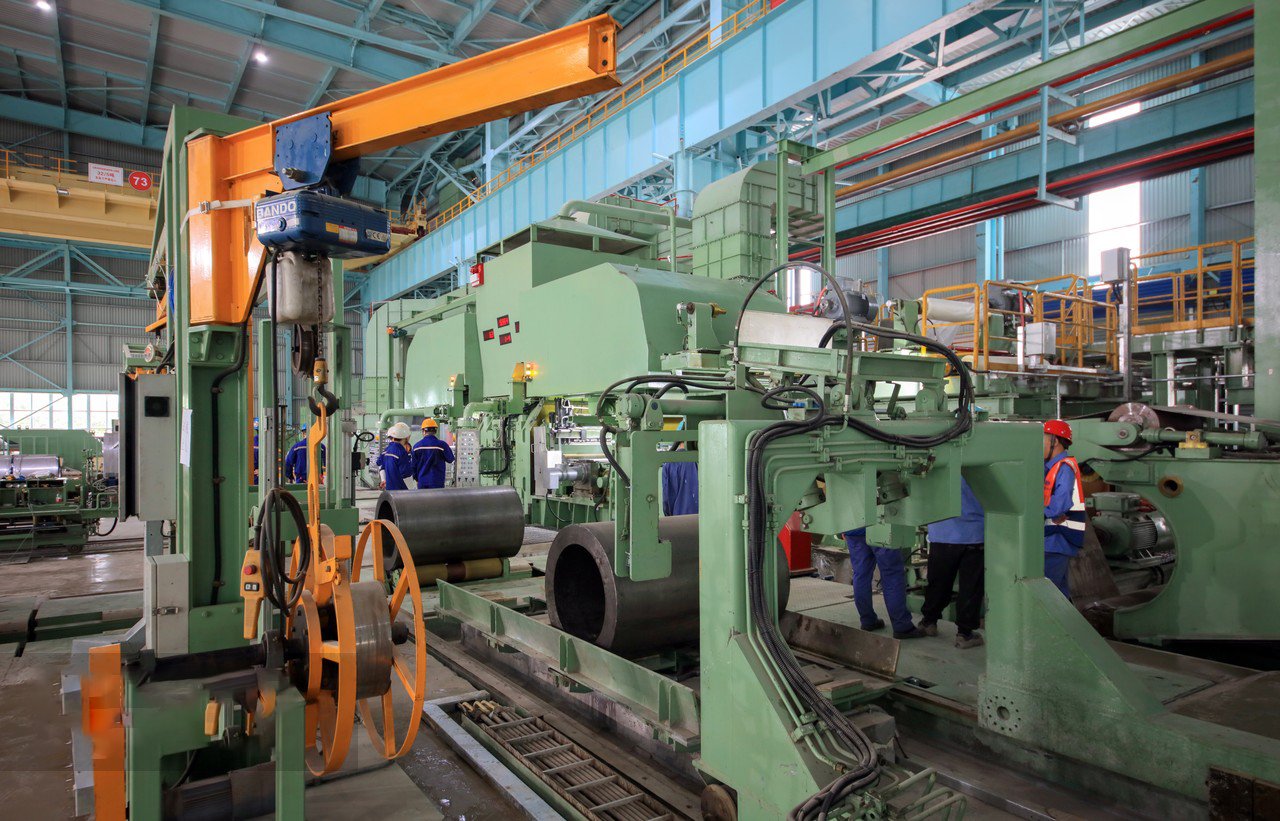
Geopolitical Tensions and Trade Policy Instability
The era of predictable, frictionless global trade has been replaced by a landscape of heightened geopolitical competition and strategic decoupling. This represents the most significant and unpredictable risk to the global stainless steel supply chain. Trade disputes, tariffs, sanctions, and outright conflicts can redraw trade routes and disrupt supply chains virtually overnight. The conflict in Ukraine6, for example, had a profound impact on the supply of raw materials like nickel and pig iron, while also affecting energy costs and logistics across Europe. These events create a ripple effect, causing price spikes and supply shortages thousands of miles away.
At MFY, we help our clients navigate this uncertainty by emphasizing supply chain diversification. A few years ago, a major engineering, procurement, and construction (EPC) contractor in the Middle East was sourcing almost exclusively from one European region for a major infrastructure project. When geopolitical tensions flared, their supply chain was immediately at risk. We worked with them to develop a "China+N" strategy, where our role as a primary, high-volume supplier from China provided a stable anchor, supplemented by other regional suppliers for added flexibility. This isn't about abandoning any single region but about building a network that is resilient to localized shocks.
The risk of protectionist trade policies remains acute. The imposition of anti-dumping duties or countervailing duties can instantly make a previously competitive supply source untenable. Businesses must constantly monitor the global trade policy environment, a task that requires significant resources and expertise. Strategic partnerships with globally connected suppliers who have on-the-ground intelligence in key markets are invaluable in providing early warnings and helping to pivot sourcing strategies before a crisis hits.
Raw Material Price Volatility and Supply Bottlenecks
The price of stainless steel is intrinsically linked to the volatile commodity markets for its key alloying elements, primarily nickel, chromium, and molybdenum. Nickel, in particular, is a major source of price instability. Its price is influenced by everything from mining output and geopolitical events in producing countries like Indonesia2 and Russia to speculative trading on the London Metal Exchange (LME). A sudden spike in nickel prices can dramatically increase the cost of producing austenitic grades (like the 300 series), making accurate project costing and maintaining stable margins incredibly difficult for end-users.
This volatility is not just a financial risk; it also creates physical supply chain risks. During periods of extreme price movement, producers may become hesitant to sell, and traders may hoard inventory, creating artificial shortages. Logistical bottlenecks, as we saw during the global pandemic, can further exacerbate these issues. Port congestion, a shortage of shipping containers, and rising freight costs can add weeks to delivery times and significantly increase the landed cost of materials. For a manufacturer running a just-in-time production line, such a delay can be catastrophic.
To mitigate these risks, sophisticated procurement strategies are essential. This goes beyond simply trying to buy at the market bottom. It involves using financial hedging tools to lock in prices, working with suppliers who have strong inventory positions, and building a degree of buffer stock into the supply chain. At MFY, our large-scale production and warehousing capabilities allow us to absorb some of this volatility, offering our long-term partners a degree of stability that smaller traders cannot. We provide visibility into our inventory and production schedules, allowing our clients to plan with greater confidence.
Economic Headwinds and Shifting Regulatory Landscapes
While the long-term growth drivers are robust, the global economy is susceptible to cyclical downturns. High inflation, rising interest rates, and the risk of recession in key markets can have a chilling effect on the large-scale capital projects that drive much of the demand for stainless steel. When borrowing costs rise, companies and governments may delay or scale back investments in new factories, infrastructure, and commercial construction, leading to a sudden drop in demand. We saw this during the 2008 financial crisis and more recently as central banks have tightened monetary policy to combat inflation.
A client in Southeast Asia, a distributor specializing in materials for commercial real estate, shared with me how several major projects were put on hold last year due to financing challenges. Their immediate challenge was managing a large inventory that was suddenly not moving. We were able to work with them on flexible payment terms and even help them re-sell some of their stock to other clients in our network who had different needs. This highlights the importance of having a financial buffer and a strong supplier relationship to weather economic downturns.
Compounding this economic risk is the evolving regulatory environment, particularly around environmental, social, and governance (ESG) standards. While the green transition is a driver, the regulations themselves can be a risk if they are implemented unevenly or unpredictably. A sudden carbon tax or new emissions standard in one country can increase production costs, making its exports less competitive. Navigating this patchwork of international regulations requires diligence and a commitment to sustainable production practices. Businesses that fail to adapt may find their market access restricted or their costs uncompetitive.
Nickel price affects stainless steel costTrue
Nickel is a key alloying element in stainless steel, and its price volatility directly impacts production costs, especially for 300 series grades.
Trade policies don't affect stainless steelFalse
Geopolitical tensions and trade policies like tariffs can significantly disrupt stainless steel supply chains and pricing globally.
How should industry stakeholders prepare for changes in demand for stainless steel sheets?
Simply being aware of the future trends and risks isn't enough. If you're passive, you risk being overwhelmed by volatility and losing out to more agile competitors. The crucial question is how to turn this foresight into a concrete, actionable plan for resilience and growth.
To prepare for demand changes, stakeholders must prioritize building a resilient and agile supply chain. This involves actively diversifying supplier bases, leveraging technology for enhanced forecasting and inventory management, and cultivating deep, collaborative partnerships with key suppliers who can offer flexibility and market intelligence.
Preparation is an active, not a passive, state. It’s about building a business that is designed to withstand shocks and capitalize on opportunities. I often think of it like building a suspension system for a car. You know the road ahead will have bumps—some small, some jarring—and you engineer a system that can absorb them, keeping the vehicle stable and moving forward. In our industry, this "suspension system" is built on three pillars: visibility, flexibility, and partnership. Visibility comes from data and technology, allowing you to see what’s coming. Flexibility comes from diversified sourcing and agile operations, allowing you to pivot quickly. And true, enduring strength comes from strategic partnerships—knowing you have a partner like MFY7 who will work with you to navigate the bumps in the road together. This framework transforms preparation from a defensive necessity into a strategic advantage.

Building Supply Chain Resilience Through Diversification
The age of relying on a single, low-cost supplier is over. The risks of disruption, whether from geopolitical events, natural disasters, or logistical failures, are simply too high. The cornerstone of modern supply chain preparation is diversification. This doesn't necessarily mean abandoning trusted partners, but rather building a robust network of suppliers across different geographic regions to mitigate localized risk. This is the essence of the "China+1" strategy that many global companies are adopting. From my perspective at a leading Chinese company, I see this not as a threat, but as a logical evolution towards a more stable global system.
A strong, reliable Chinese partner like MFY can serve as the powerful anchor of this diversified strategy. Our scale, integrated production capabilities, and vast inventory provide a baseline of stability and competitive pricing. We recently worked with a major equipment manufacturer who was looking to build resilience. We helped them map their supply chain risks and established a primary supply agreement that covered 70% of their needs, ensuring volume and consistency. Simultaneously, we used our global network to help them identify and qualify a secondary supplier in Southeast Asia to cover the remaining 30%, giving them a crucial backup and flexibility for regional demand spikes.
This balanced approach provides the best of both worlds. It maintains access to China's unparalleled manufacturing ecosystem and economies of scale while insulating the business from the risk of over-reliance on a single point of failure. The goal is not to eliminate dependency, but to distribute it intelligently. A well-diversified supply base, with strong partners in key nodes, is the foundation upon which a resilient enterprise is built. It turns the supply chain from a potential vulnerability into a source of strength and flexibility.
Leveraging Technology for Enhanced Forecasting and Inventory Management
In a volatile market, intuition and experience are valuable, but they are no longer sufficient. The ability to collect, analyze, and act on data is what separates the leaders from the laggards. Technology is the key enabler of this capability, transforming forecasting from a guessing game into a data-driven science and optimizing inventory to be lean yet responsive. Modern Enterprise Resource Planning (ERP) systems, powered by artificial intelligence (AI) and machine learning can analyze historical sales data, market trends, and even external factors like commodity prices and shipping indices to generate far more accurate demand forecasts.
At MFY, we have invested heavily in our own digital infrastructure, not just to optimize our operations, but to provide better service to our clients. Our client portal provides real-time visibility into order status, production schedules, and available inventory. This transparency allows our partners to manage their own inventory more effectively, reducing the need for excessive safety stock while still protecting them from stockouts. One of our distributor clients in Russia integrated their inventory management system directly with ours via an API. Now, when their stock of a particular grade of stainless steel sheet falls below a certain threshold, an order is automatically generated, streamlining their procurement and ensuring they never miss a sale.
This level of technological integration is becoming the new standard for strategic supply chain management. It moves the relationship beyond simple transactions to a shared ecosystem of information. By leveraging these tools, businesses can reduce carrying costs, improve cash flow, and increase their ability to respond swiftly to sudden changes in customer demand, turning data into a decisive competitive advantage.
Fostering Strategic Partnerships with Suppliers
In the end, supply chains are run by people, and the quality of your relationships is one of the most powerful forms of risk mitigation. Moving beyond a purely transactional relationship with suppliers to build a true strategic partnership is essential for navigating uncertainty. A transactional supplier will sell you a coil of steel. A strategic partner will call you when they see early signs of a potential logistics bottleneck and work with you to expedite your shipment. This is a critical distinction.
A true partnership is a two-way street built on trust, transparency, and shared goals. It involves open communication about your project pipeline, demand forecasts, and business challenges. In return, a partner like MFY can offer far more than just a competitive price. We provide market intelligence, technical advice on material selection, and, most importantly, flexibility when challenges arise. Last year, a long-term construction client in India faced unexpected project delays, leaving them with a cash flow crunch. Because of our deep relationship, we were able to offer them extended payment terms, allowing them to weather the storm without jeopardizing the project or their business. This is a level of support you simply cannot get from an anonymous vendor on a commodity exchange.
To foster these partnerships, stakeholders should consolidate their volume with a few core suppliers who have demonstrated reliability and a willingness to collaborate. Schedule regular business reviews to discuss not just past performance but future strategy. Be transparent about your needs and listen to your supplier’s challenges. By investing in these relationships, you build a reserve of goodwill and collaborative problem-solving capability that is invaluable in a crisis. It is this human element that ultimately provides the final and most resilient layer of preparation.
Diversification reduces supply chain risksTrue
Having multiple suppliers across different regions mitigates localized disruptions and creates a more resilient supply chain.
Single suppliers ensure lowest costsFalse
While single suppliers may offer low prices, they create vulnerability to disruptions that can ultimately lead to higher costs.
You've analyzed the trends and understand the risks, but the critical final step is translating that knowledge into decisive action. Without a clear set of strategies, analysis leads to paralysis, leaving your business exposed. What concrete steps should you take to actively navigate the challenging road ahead?
To effectively navigate demand risks, businesses should implement agile procurement and hedging strategies, diversify into niche markets and value-added services to protect margins, and embrace sustainability not as a cost but as a core competitive advantage that mitigates regulatory and market risks.
These recommendations form a cohesive strategic framework designed to build both defensive resilience and offensive agility. It’s about creating a business that is not only protected from downside risk but is also positioned to proactively seize opportunities that emerge from market volatility. For example, while hedging protects your margins from commodity swings, investing in value-added services allows you to capture new revenue streams that are less susceptible to those same price pressures. I’ve personally guided many of our partners at MFY through this process, helping them shift their mindset from simply surviving market cycles to actively benefiting from them. This strategic pivot is what transforms a company from a price-taker into a market-shaper, securing its position for the long term.
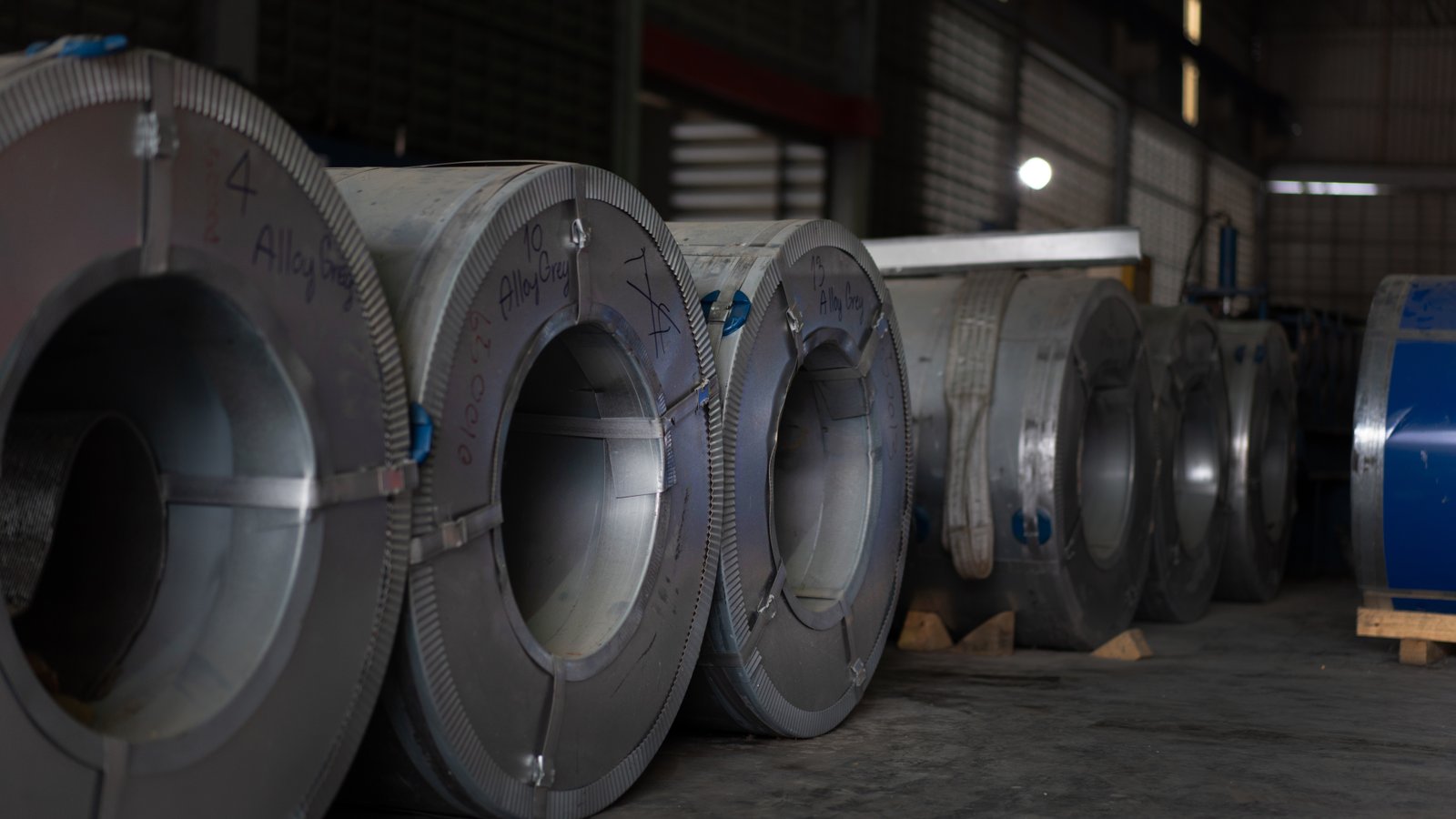
Implementing Agile Procurement and Hedging Strategies
The days of setting an annual budget for steel and expecting prices to remain stable are long gone. Navigating the inherent volatility of the stainless steel market, driven largely by fluctuating nickel and chromium prices, requires a dynamic and sophisticated approach to procurement. An agile strategy involves moving away from a single purchasing model and instead blending different methods based on market conditions. This could mean using forward contracts to lock in prices for the predictable, baseline portion of your demand, providing stability for core projects. For the remainder of your needs, you might use spot market purchases to capitalize on price dips.
Financial hedging is another powerful tool that is no longer reserved for only the largest corporations. Using instruments on exchanges like the LME, companies can hedge their exposure to nickel price movements. This effectively creates a form of price insurance. If you have a large, fixed-price contract with a customer, hedging the required tonnage of nickel can protect your margin if the market price surges before you procure the material. We have worked with several mid-sized manufacturing clients to help them understand these mechanisms, often connecting them with financial experts to develop a program tailored to their risk appetite.
The key to an agile strategy is information and flexibility. It requires staying constantly informed about market trends and having supplier relationships that can accommodate different purchasing models. A strategic partner like MFY, with our significant market presence and risk management expertise, can provide the intelligence and the flexible contract structures needed to execute such a strategy effectively, turning procurement from a reactive cost center into a proactive tool for margin protection.
Investing in Niche Markets and Value-Added Services
In a market where standard-grade products can easily become commoditized and subject to intense price competition, one of the most effective long-term strategies is to move up the value chain. This involves a strategic diversification into niche markets or the addition of value-added services. Instead of solely competing on the price of a standard 304 sheet, a business can differentiate itself by catering to customers with more specific and complex needs. This could mean focusing on specialized industries like medical devices, aerospace, or food processing, which require specific grades, finishes, and certifications.
At MFY, our fully integrated supply chain is a testament to this philosophy. We don't just trade steel coils; we have advanced cold-rolling facilities to achieve precise thickness and custom finishes, as well as tube manufacturing lines to create finished products. This allows us to support clients who are making this same strategic shift. For instance, a long-time distributor partner of ours was facing margin compression on standard sheets. We worked with them to develop a new business line supplying polished and PVC-coated sheets to manufacturers of high-end elevators and architectural trim. This not only created a higher-margin revenue stream for them but also made their business less vulnerable to general market price swings.
This strategy requires a deeper understanding of customer applications and a willingness to invest in equipment and expertise. However, the rewards are significant. It builds stickier customer relationships, as you become an integral part of their production process, not just a material supplier. By providing services like precision cutting, slitting, polishing, or just-in-time delivery of custom-sized parts, you are selling a solution, not just a commodity, which is a far more defensible and profitable position in the long run.
Embracing Sustainability as a Competitive Advantage
For too long, sustainability has been viewed by some in heavy industry as a compliance cost or a regulatory burden. This perspective is rapidly becoming obsolete. Today, and certainly in the 2025-2030 timeframe, a strong sustainability posture is a powerful competitive advantage and a critical risk mitigation tool. Customers, investors, and regulators are increasingly demanding transparency and a demonstrable commitment to environmental responsibility. Companies that lead in this area will find themselves with enhanced brand reputation, greater access to capital, and preferential treatment from top-tier customers.
Stainless steel is inherently a sustainable material. It is durable, requiring less frequent replacement, and it is nearly 100% recyclable without any loss of quality. Businesses should proactively leverage these attributes in their marketing and customer communications. For example, by providing lifecycle analysis data that shows the lower total environmental impact of a stainless steel solution compared to alternatives, you can help your customers achieve their own sustainability goals. This aligns your business with the powerful \"green\" driver we discussed earlier and turns it into a direct sales tool.
Furthermore, embracing sustainability internally is a direct hedge against regulatory risk. By investing in energy-efficient production, reducing waste, and ensuring ethical sourcing of raw materials, you stay ahead of the regulatory curve. When new carbon taxes or emissions standards are inevitably introduced, your business will be prepared, while less forward-thinking competitors will be left scrambling to comply, facing higher costs and potential penalties. At MFY, our commitment to innovation includes finding ways to lower the carbon footprint of our processes, a strategy that we believe is not just good for the planet but essential for long-term business resilience and market leadership.
Hedging protects against nickel price volatilityTrue
Financial instruments like LME contracts can stabilize procurement costs when nickel prices fluctuate.
Standard-grade products yield highest profitsFalse
Niche markets and value-added services typically offer better margins than commoditized standard products.
Conclusion
Navigating the global stainless steel sheet market from 2025 to 2030 demands more than just awareness; it requires action. Success will be defined by a blend of data-driven forecasting, strategic diversification, and deep, collaborative partnerships. Proactive planning is the key to transforming volatility into opportunity.
-
Explore differences in demand across various regions and industries impacting stainless steel market ↩
-
Discover steel demand growth rates in Asian economies versus global trends for industry insight ↩ ↩
-
Learn about high-performance grades affecting stainless steel demand in industrialized regions ↩
-
Learn how sustainability shapes industrial and consumer stainless steel use cases. ↩
-
Discover why stainless steel is vital for long-lasting, weather-resistant solar panel structures. ↩
-
Understand the widespread impact of geopolitical tensions on metal prices ↩
-
Learn how MFY can enhance supply chain resilience with strategic partnerships and market flexibility ↩
Have Questions or Need More Information?
Get in touch with us for personalized assistance and expert advice.
